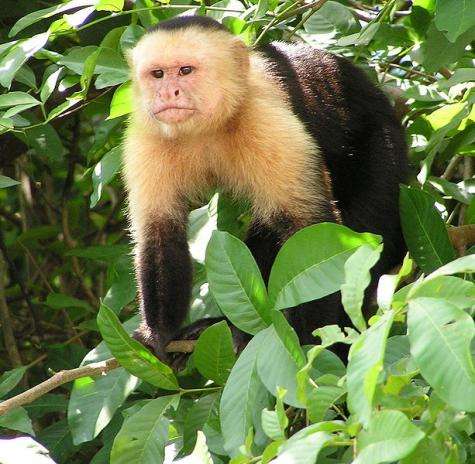Research finds male and female capuchin monkeys show visible differences in brain structures

Male and female capuchin monkeys don't just behave differently—their brains look different too. According to a new study published by a team of researchers from Georgia State University, Harvard University, and Trinity University, capuchin monkeys show sex differences in their brains.
Using a noninvasive imaging technique, researchers found that male capuchin monkeys showed expansion in the gray matter of a brain area called the hypothalamus, which is responsible for maintaining critical body functions such as hormone secretion and temperature regulation. Female capuchin monkeys showed expansion in the gray matter of different brain areas than males. Analyses of the connectivity of the white matter in the brain revealed that expansion for females was primarily found in areas that are associated with higher-order functions such as attention, perception, and social behavior.
Male and female capuchins inhabit different social niches: females rely on high quality resources and strong relationships with maternal kin to acquire reproductive success, which means that they compete with other females for these resources and for male attention. On the other hand, males rely on social status and must compete against other males from outside groups for reproductive success. One possible explanation for the sex differences that emerge in capuchin brains is that selection pressures act differently on the brains of males and females as a result of their separate social niches.
"Knowing these differences will be informative for future behavioral and cognitive studies with these monkeys, particularly in social contexts," said Olivia Reilly, a Ph.D. candidate in the department of psychology at Georgia State and one of the lead authors of the study.
Studying sex differences in capuchin brains can help scientists to learn more about the evolution of sex differences and when such differences may have evolved. Most of what we know about the evolution of sex differences in the brain comes from rodent studies, which show clear differences, primarily in ancestral brain areas that control instinctive behaviors like reproduction. On the other end of the spectrum are humans, who have incredibly complex brains that show less clear-cut sex differences. Human sex differences emerge in both ancestral brain areas and also in higher-order areas that are involved in social behavior and cognition. Capuchin monkeys help to fill this gap by showing what sex differences exist in a species that is more closely related to humans than rodents are.
"Capuchins have not been the focus of very much neuroscience research to date. It's important for us to study many different species, in order to understand how brains evolve across the animal kingdom," said Erin Hecht, assistant professor at Harvard University and a lead author of this study.
"Capuchin monkeys are a great model for us to study sex differences in the brain, because evolutionarily, capuchins fall between humans and rodents," said Reilly. "Sex differences in rodent brains often appear in areas that control innate behaviors, while human sex differences in the brain are a lot more complex, and tend to occur in areas involved with higher-order functions."
More information: Erin E. Hecht et al. Sex differences in the brains of capuchin monkeys ( Sapajus [Cebus] apella ), Journal of Comparative Neurology (2020). DOI: 10.1002/cne.24950

















